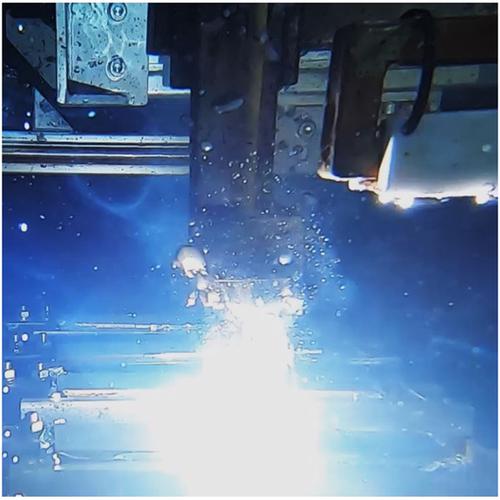当前位置:
X-MOL 学术
›
Mater. Corros.
›
论文详情
Our official English website, www.x-mol.net, welcomes your
feedback! (Note: you will need to create a separate account there.)
Control of the diffusible hydrogen content in different steel phases through the targeted use of different welding consumables in underwater wet welding
Materials and Corrosion ( IF 1.6 ) Pub Date : 2020-09-24 , DOI: 10.1002/maco.202011963 Jan Klett 1 , Isabel B. F. Mattos 2 , Hans J. Maier 1 , Régis H. G. e Silva 2 , Thomas Hassel 1
Materials and Corrosion ( IF 1.6 ) Pub Date : 2020-09-24 , DOI: 10.1002/maco.202011963 Jan Klett 1 , Isabel B. F. Mattos 2 , Hans J. Maier 1 , Régis H. G. e Silva 2 , Thomas Hassel 1
Affiliation

|
Due to the rising number of offshore structures all over the world, underwater wet welding has become increasingly relevant, mainly as a repair method. Welding in direct contact with water involves numerous challenges. A topic focused by many studies is the risk of hydrogen‐induced cracking in wet weldments due to hardness values of up to 500 HV 0.2 in the heat‐affected zone (HAZ) and high levels of diffusible hydrogen in the weld metal. The risk of cracking increases as the equivalent carbon content rises, because the potential to form martensitic structures within the HAZ rises too. Thus, high‐strength steels are especially prone to hydrogen‐induced cracking and are considered unsafe for underwater wet repair weldments.
中文翻译:

通过在水下湿式焊接中有针对性地使用不同的焊接材料来控制不同钢相中的扩散氢含量
由于全世界海上结构的数量不断增加,水下湿焊已变得越来越重要,主要是作为一种修复方法。与水直接接触的焊接涉及许多挑战。许多研究关注的主题是,由于热影响区(HAZ)的硬度值高达500 HV 0.2和焊缝金属中的高水平扩散性氢,湿焊件中存在氢致裂纹的风险。当等效碳含量增加时,开裂的风险增加,因为在热影响区中形成马氏体结构的可能性也增加。因此,高强度钢特别容易产生氢致裂纹,并被认为对水下湿修补焊件不安全。
更新日期:2020-09-24
中文翻译:

通过在水下湿式焊接中有针对性地使用不同的焊接材料来控制不同钢相中的扩散氢含量
由于全世界海上结构的数量不断增加,水下湿焊已变得越来越重要,主要是作为一种修复方法。与水直接接触的焊接涉及许多挑战。许多研究关注的主题是,由于热影响区(HAZ)的硬度值高达500 HV 0.2和焊缝金属中的高水平扩散性氢,湿焊件中存在氢致裂纹的风险。当等效碳含量增加时,开裂的风险增加,因为在热影响区中形成马氏体结构的可能性也增加。因此,高强度钢特别容易产生氢致裂纹,并被认为对水下湿修补焊件不安全。











































 京公网安备 11010802027423号
京公网安备 11010802027423号